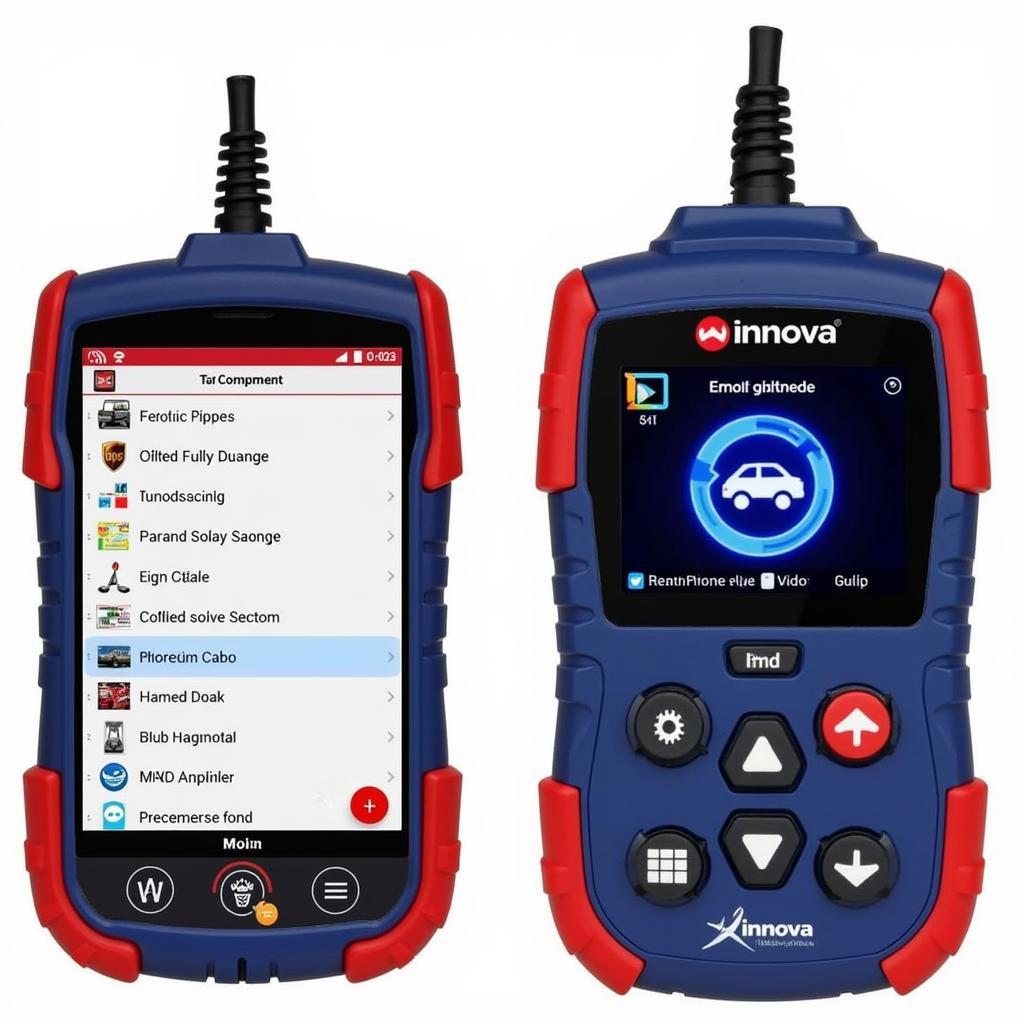Choosing the right OBD II scan tool is essential for anyone who wants to diagnose car problems, monitor engine performance, or clear trouble codes. But with so many different options available, it can be overwhelming to know where to start. This comprehensive guide will walk you through everything you need to know about OBD II scan tools, from basic functionalities to advanced features, and help you find the perfect tool for your needs.
Understanding OBD II Scan Tools
OBD II (On-Board Diagnostics II) is a standardized diagnostic system that’s been mandated for all gasoline-powered vehicles sold in the United States since 1996. OBD II scan tools connect to your car’s diagnostic port (usually located under the dashboard) and allow you to access real-time data about your vehicle’s performance.
What Can OBD II Scan Tools Do?
Here are some of the most common uses for OBD II scan tools:
- Read and clear trouble codes: Trouble codes are diagnostic codes that indicate a problem with your car’s engine or other systems. An OBD II scan tool can help you identify and clear these codes, potentially saving you from expensive repairs.
- Read live data streams: Live data streams provide real-time information about various aspects of your car’s performance, such as engine speed, coolant temperature, and fuel pressure. This data can be invaluable for troubleshooting issues and monitoring engine health.
- View freeze frame data: Freeze frame data captures information about your car’s condition at the moment a trouble code is set. This data can help you pinpoint the cause of the problem.
- Perform bi-directional tests: Some advanced OBD II scan tools allow you to activate or deactivate certain components in your car, such as the air conditioning system or the fuel pump.
- Reset maintenance lights: Most cars have a “maintenance required” light that needs to be reset periodically. An OBD II scan tool can typically reset this light.
Types of OBD II Scan Tools
OBD II scan tools come in a wide range of shapes and sizes, from basic code readers to professional-grade diagnostic tools. Here’s a breakdown of the most common types:
- Basic Code Readers: These are the simplest and most affordable type of OBD II scan tool. They can only read and clear trouble codes.
- Advanced Code Readers: Advanced code readers offer additional features, such as live data streams, freeze frame data, and bi-directional testing capabilities.
- Professional Diagnostic Tools: These are the most comprehensive and expensive type of OBD II scan tool. They provide all the features of advanced code readers, plus advanced functions like ECU programming and sensor calibration.
Key Features to Consider
When choosing an OBD II scan tool, it’s essential to consider the features that are most important to you. Here are some key features to keep in mind:
- Compatibility: Make sure the scan tool is compatible with your car’s year, make, and model.
- Display: The display should be easy to read and understand, especially if you’re a beginner.
- Connectivity: Some scan tools connect via Bluetooth or Wi-Fi, while others use a USB cable. Consider what type of connectivity is most convenient for you.
- Data Logging: Some scan tools can log data over time, which can be helpful for diagnosing intermittent problems.
- Software Updates: Look for a scan tool that offers regular software updates to ensure compatibility with the latest vehicle models and technologies.
The Best OBD II Scan Tools for Different Needs
Here are some of the best OBD II scan tools on the market, categorized by their intended use:
For Home Mechanics
 actron-cp9690-obd2-scan-tool
actron-cp9690-obd2-scan-tool  bluedriver-bluetooth-obd2-scan-tool
bluedriver-bluetooth-obd2-scan-tool
For Professional Mechanics
 launch-x431-pro-obd2-scan-tool
launch-x431-pro-obd2-scan-tool autoboss-v50-obd2-scan-tool
autoboss-v50-obd2-scan-tool
For Car Owners
 scanner-obd2-reader
scanner-obd2-reader innova-3100-obd2-scan-tool
innova-3100-obd2-scan-tool
Tips for Using an OBD II Scan Tool
Here are some tips for using an OBD II scan tool effectively:
- Read the manual: Every scan tool comes with a manual that explains how to use it properly. Take the time to read it carefully before using the tool for the first time.
- Understand the data: The data displayed by an OBD II scan tool can be overwhelming for beginners. Take the time to learn what the different readings mean.
- Consult a professional: If you’re not sure how to interpret the data or diagnose a problem, consult a qualified mechanic.
Conclusion
The right OBD II scan tool can save you time, money, and frustration. By understanding the different types of scan tools available and the key features to consider, you can choose the perfect tool for your needs. Whether you’re a home mechanic, a professional, or just a car owner who wants to keep an eye on their vehicle’s health, an OBD II scan tool can be a valuable asset.
FAQ
- Q: Is an OBD II scan tool necessary?
- A: While not strictly necessary, an OBD II scan tool can be incredibly helpful for diagnosing car problems and monitoring engine health.
- Q: How often should I use an OBD II scan tool?
- A: It’s recommended to use an OBD II scan tool at least once a year to check for any trouble codes or issues. You can also use it more frequently if you notice any unusual symptoms with your car.
- Q: Can I use an OBD II scan tool to reset the “Check Engine” light?
- A: Yes, most OBD II scan tools can reset the “Check Engine” light after clearing any trouble codes. However, it’s important to remember that resetting the light doesn’t necessarily fix the underlying problem.
- Q: Can an OBD II scan tool tell me how much oil I need?
- A: No, an OBD II scan tool can’t tell you how much oil you need. You’ll need to check your car’s dipstick to determine the oil level.
- Q: Can I use an OBD II scan tool to improve my car’s performance?
- A: While an OBD II scan tool can provide information about your car’s performance, it can’t directly improve it. However, it can help you identify areas where you can make adjustments or repairs to improve efficiency.
- Q: Are all OBD II scan tools compatible with all cars?
- A: Not all OBD II scan tools are compatible with all cars. It’s important to check the compatibility before purchasing a scan tool.


